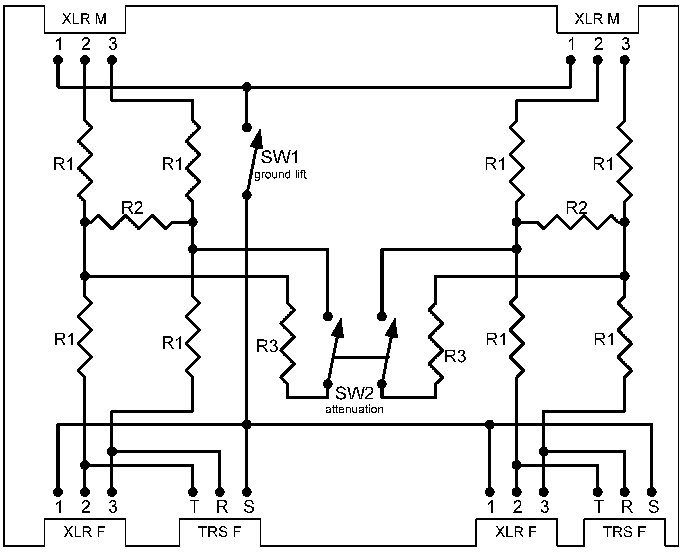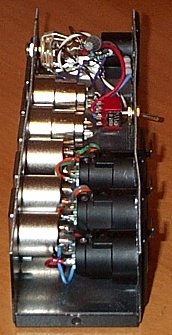

 |
|
|
updated: 03 Feb 2007 The Direct Box
I needed a way to cough up some extra outputs, since the MLM-82 only has a pair of XLR outputs. But,
I also knew that I was going to want to have a pair of direct boxes (to interface the rack with the
house PA or a recording setup). Since the microphone jacks are on the back of the Rane, I'd want
a patch bay to bring those up front. So, I got all adventurous and built a wacky box that does
all of these things. 
 with the switch closed the box provide a mic-level output, and with it open you get something somewhere around
line level.
I built the divider network on a little perf board and then mounted it in a little metal enclosure.
LMB Heeger
makes these great little boxes which are exactly one half-rack wide. Along with the direct box I added a little
patch bay for the three Leslie mics.
with the switch closed the box provide a mic-level output, and with it open you get something somewhere around
line level.
I built the divider network on a little perf board and then mounted it in a little metal enclosure.
LMB Heeger
makes these great little boxes which are exactly one half-rack wide. Along with the direct box I added a little
patch bay for the three Leslie mics. Here are some photos at various stages of assembly. I did run into one problem. I had the front of the box all measured and drilled, only to discover that the Switchcraft XLR connectors were too deep. D'oh! I had to stagger the male connector from the corresponding female connector so that they wouldn't bump into each other. I had to switch from measured mode to eyeball mode, so some the panel jack spacing is a bit wonky. Oh well. Fortunately, most of the really weird spacing is on the part of the box that's inside the rack. For awhile I kept telling myself I'd fix this and do it right, but it hasn't happened yet. 


I later built a second box which provides wall-wart power for the V-5 and Roland MIDI controller via a 4-pin CB-radio-mike type jack. This second box also has MIDI IN and THRU, as well as an auxiliary audio input. The goal was to eliminate the need to go fumbling around the back of the rack, always a drag on a darkened stage. I came pretty close - with the exception of the power amp speaker jack, and the power to the Furman power conditioner, all of the connections needed to setup and tear down are accessible on the front of the rack.
COPYRIGHT © 1996-2005 David Chesavage All Rights Reserved |